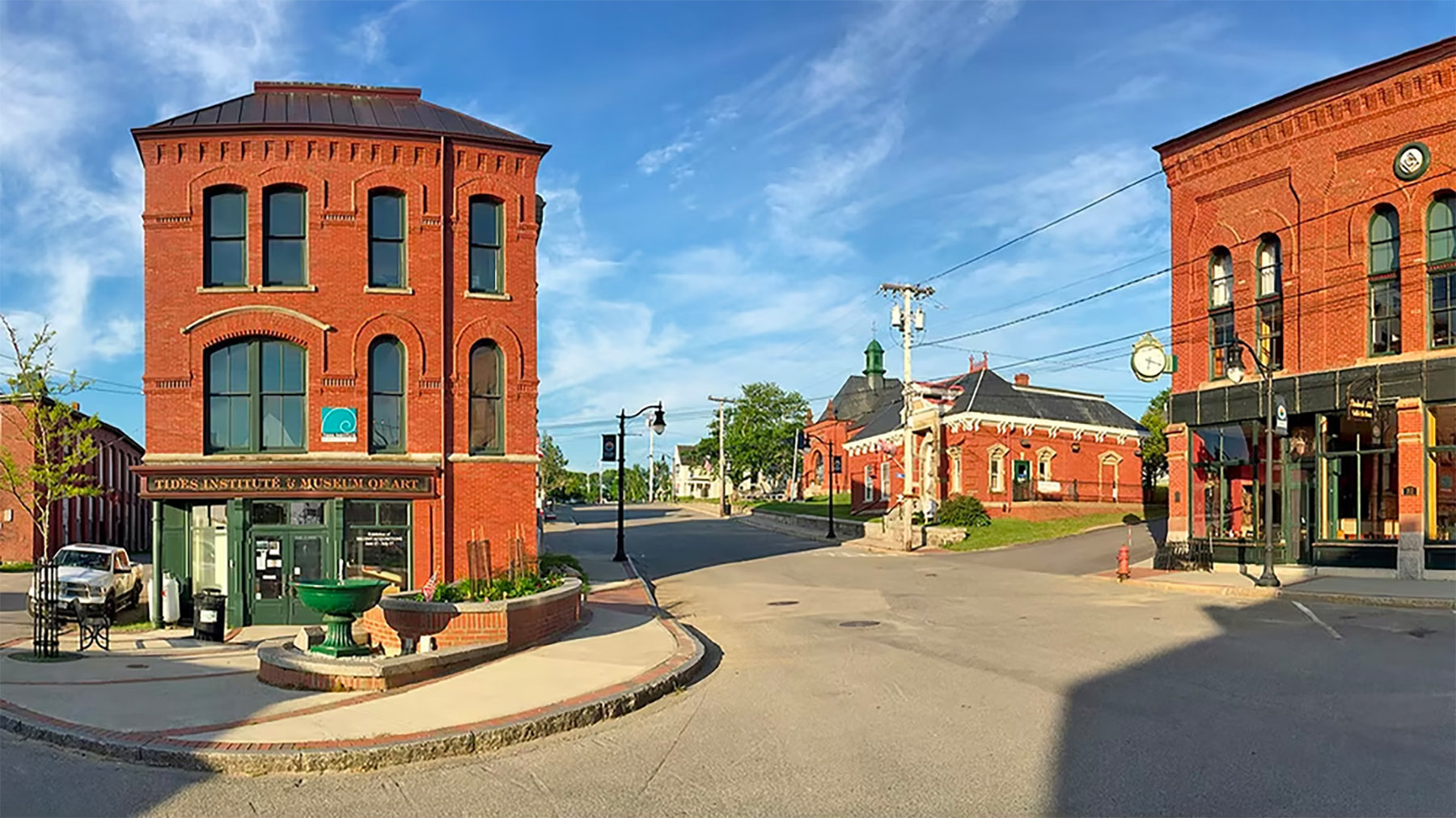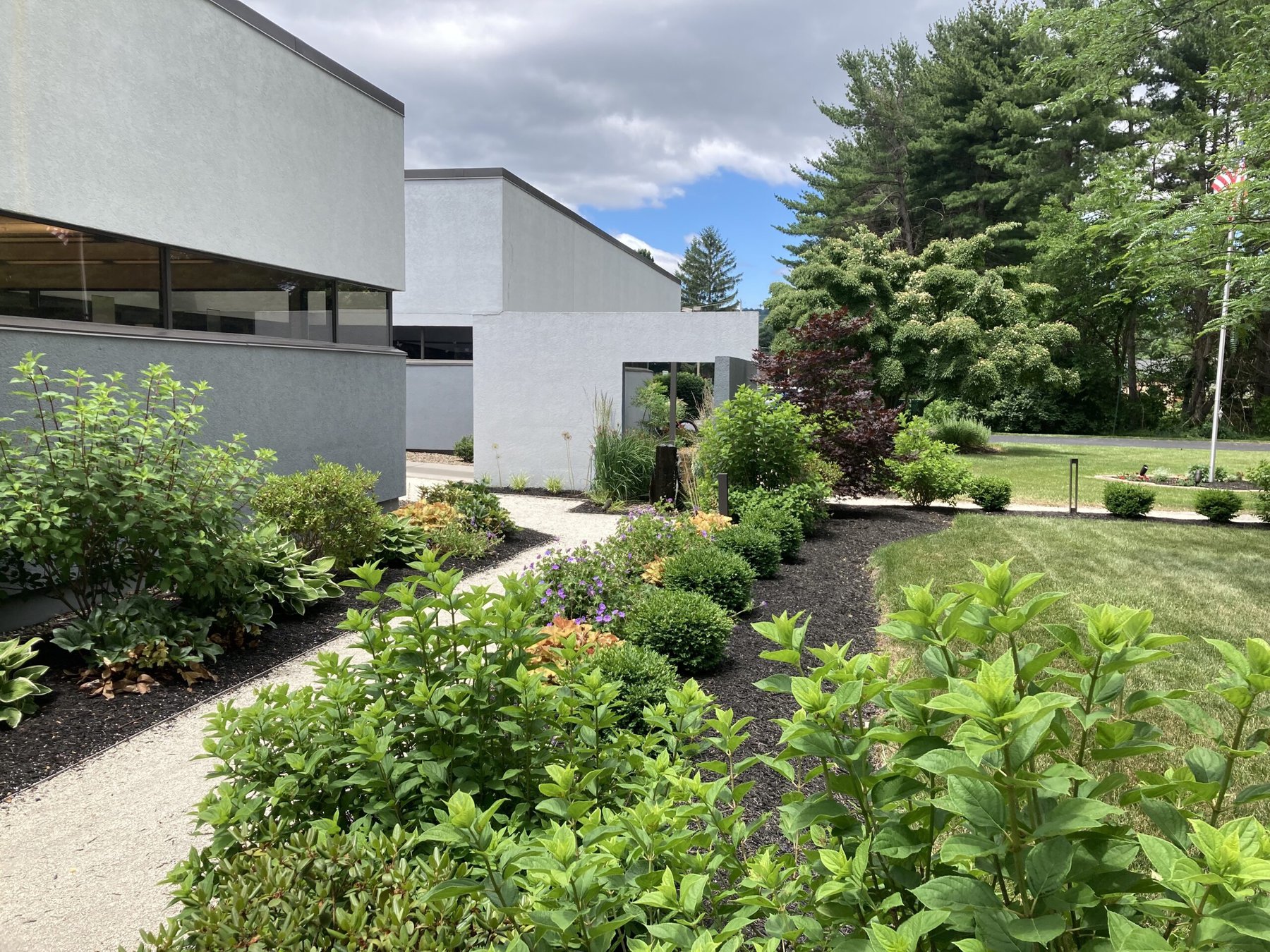During our travels to towns around the U.S., Jim Fallows and I have come across several artist-in-residence programs, for example in Ajo, Arizona; Eastport, Maine; and Tulsa, Oklahoma. Here is the report from one of those artists, Richelle Gribble, on her experience of being an artist in a new place, how it fits into her practice of art, and how she sees her role in the community.
There is a second perspective of artists-in-residence, and it comes from the communities who host them. Why does a community bring an artist into its life? What do the artists and their presence bring to a town and the people who live there?
For that perspective, I went to Kristin McKinlay, who developed and directs StudioWorks, the artist-in-residence program of the Tides Institute & Museum of Art (TIMA) in Eastport, where Richelle Gribble worked. McKinlay and her husband, Hugh French, founded and run the formidable and influential TIMA, as our colleague John Tierney has written about here.
The inspiration for StudioWorks, McKinlay told me, was that a goal of TIMA was not only preserve history, but to “foster the creation of new work.” And for the town, the goals were equally lofty: to add to the cultural landscape, to bring a new energy, and to help revitalize the downtown. And for the arts: to support the work of artists.
The artist residency fit with the mission of TIMA, which also includes publications, like this stunning book on Eastport architecture, partnerships with other organizations, letterpress cards, a poster series, and education initiatives.
The Tides Institute launched StudioWorks in 2013. Since then, they have hosted a broadly diverse group of 57 artists from all over the world for stays of two weeks to two months. That number represents a big presence in Eastport, population 1,300. It also represents a big commitment, for 57 artists to travel the 250 miles “downeast” (north and east) from Portland or 115 miles east from Bangor. No one arrives in Eastport accidentally.
The program has grown through hard work and good luck. The Tides Institute bought and renovated a Water Street (the main street) storefront building for StudioWorks. As did many residents and tourists, Jim and I wandered in off the sidewalk early in our first of several visits to Eastport, to see and talk to Richelle at work. Soon, two houses were donated to the program, making for more living and workspace for the artists. Those were within a block of downtown and walkable to just about everything you might really want or need in Eastport. They also bought the old Free Will North Baptist Church, a building large enough to accommodate Undertow, Anna Hepler’s installation, which she describes as “the hull of an empty ship in … the nave of an empty church,” which we also saw during a visit to Eastport.
The program is funded by foundations, grants, and private funding and provides a $2,000 per month (or prorated) stipend for the artists. Artplace America, a grantfunding organization whose imprint we have seen across the country, was an early supporter, and its impact is akin in a more modest way to Carnegie’s in libraries or the WPA projects in schools, post offices, recreation facilities, parks, and so on.
The many artists brought many different perspectives to Eastport. Their work and connections have spilled out all over town; in schools, in library workshops, on the pier, along the waterfront, and door-to-door.
McKinlay rattled off descriptions of some of the projects, many of which engaged with the essence of Eastport as a town that is intimate—in every sense of its proximity, history, economy, and culture—with water. Eastport’s placemaking is inseparable from its water.
Here are brief descriptions of some of the work:
Elizabeth Bennett hung drawings off the working fish pier along Water Street, right across the street from StudioWorks. The high tides brought water that erased parts of the drawings as it came in.
Amanda Thackray made paper by hand using the local seawater, and printed on it the shapes of plastic garbage and marine trash that she found while walking along the coastline. Thackray wrote about her residency here.
Montana Simone, whom we met in Eastport last summer when we were there with an HBO film crew, preparing a documentary based on Our Towns, was deftly climbing and scrambling around the ramshackle old pier supports, next to the abandoned sardine canning factory. She wrapped two supports with huge canvases, leaving one in place for what would be two months to be marked and stained by the rising and falling tides.
Onya Hogan-Finlay and Kim Kelly hosted an event for the community that included a walk; a picnic with local food shared on a specially-created cloth screen-printed with images of seaweed and other regional flora; and a drawing session on paper letter-pressed with the event title “Low Tide High Tea.”
Will Rose made animations about Eastport wildlife, and then followed up later from London for an artist talk with Eastport school kids via Facetime.
Adriane Herman, inspired from her interests in pollution, trash, left and reclaimed items, and her commitment to recycling, worked with found items, such as discarded books and papers. She took her passion into the community in a few ways. She worked with teachers and students at the school on many projects, from zine-making to exploring the local burn pile as a subject for artistic study. She also offered a workshop series at the public library, Peavey Memorial Library, and volunteered at the ultimate local recycler, Eastport’s thrift shop, New to You.
Seliena Coyle undertook a “selfie” project where community members took and developed self-portraits using pinhole cameras and a makeshift darkroom.
Alicia Eggert took 720 conceptual art photos spanning every single minute of a day from noon to midnight. She knocked on Eastport doors asking to photograph people’s timepieces—from grandfather clocks to microwave clocks to wrist and pocket watches. When Eggert asked for advice on how an artist with such a project might be received at the front doors, McKinlay answered, “The only risk is being invited in for pie.” By the end of the project, people opened their doors with the greeting, “We’ve been waiting for you.” One resident even lent Eggert his watch collection, saying she could fill in some missing minutes that way. McKinlay told me that this wide effort grew into a big wave of good public relations about the artist-in-residence program and contemporary art practice.
McKinlay and I also talked about the economic impact of the program. For those who remain skeptics about the positive economic impact that the arts can have on a town, here are some answers.
In Eastport, three abandoned buildings and a church have been renovated with local contractors and artisans into showpieces. The contractors become their own best marketers, displaying their products for future renovations from businesses and prospective homebuyers in Eastport. The buildings also then require maintenance, landscaping, and lawncare. A local high school student is employed as a year-round intern for the program. A few artists have brought young children with them, and used for-pay childcare in town while they worked. The artists-in-residence become part of Eastport tourism, including the considerable population of artists who live in town and galleries that display their work. The $2,000-per-month artist stipend is largely spent on local commerce.
McKinlay told me a touching story of how the artists can contribute to both the hard economics and the soft cultural spirit of the town.
Tracey Cockrell, a sculptor-in-residence, was building speakers out of seaweed and electro-conductive thread. She made field recordings around the region with a waterproof microphone. She went next door to the S. L. Wadsworth & Son Chandlery, the hardware store the artists frequent for supplies (and is also one of my favorite Eastport shops; you can find most anything there!), looking for Plasti Dip, a flexible rubber coating to waterproof her microphone. This time, the shop didn’t carry the product, but another shopper, overhearing the conversation, asked what color Cockrell wanted. She said she wasn’t sure yet. The next day, what should Cockrell find on the StudioWork doorstep, but a brown paper bag with the packages of Plasti Dip in every color. The good (and anonymous!) Eastport resident had driven more than 25 miles down the road to Calais and bought them for her.




